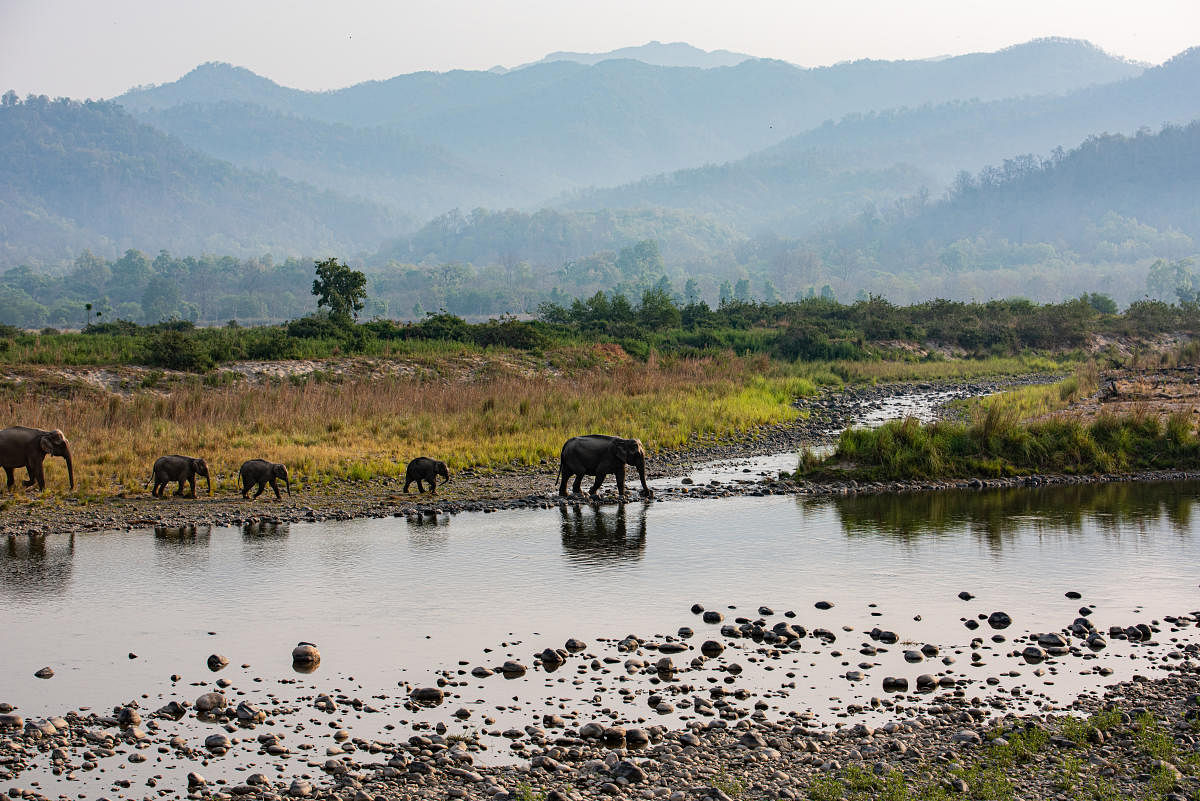
Growing up in a desert, the only animals I ever saw as a child was a mouse or sometimes a snake. My exposure to the wildlife came through television and mostly through books on wildlife.
One particular author Jim Corbett caught my attention. His writings about tigers — man-eaters some of them — and his description of the beautiful jungle where he hunted them stirred my imagination as a child with the hope that one day I will visit the place where he had hunted those tigers, hoping to see at least one. The chance to visit came in the winter of 2015. I was warned by my friends that in the Corbett National Park, the chances to see a tiger was 3%, but having seen and photographed tigers in other parks, I knew where to find the tiger and my reason to visit was to see the great jungle. I was told that there are 4-5 zones in Corbett National Park. One of the zones, the Dhikala zone, offers a provision to stay inside the forest. Dhikala was where project tiger took birth in 1972. I was lucky to get the Dhikala Zone and stay at the forest rest house.
The entry to Dhikala is from Ramnagar, a quaint little town in Uttarakhand state. Its nearest airport is Delhi and it is accessible by train and road. I was picked up at the railway station and then taken to the checkpoint at 5.30 am. After all the entry formalities were completed, I was told its a 30-odd km drive through the jungle to reach the Dhikala Rest house and to be ready for a tiger sighting at any time.
The forest was exactly the way Jim Corbett had described it what with giant sal trees, majestic landscape, and unending river beds. The forest was teeming with wildlife and birdlife. The Dhikala forest is a treat for bird lovers, with unique species in every nook and corner with approximately 600 species including the great pied hornbill. The amount of wildlife we get to see is a feast for the eyes of the wildlife lover. The main attraction in Dhikala is the tiger and at present, three females with cubs and a dominant male can be seen if one is lucky. I was fortunate to sight all three of them during my subsequent trips, but sighting requires a combination of luck and patience. The drivers and guides are excellent and professional and if one is patient enough with their decisions, the chances of tiger sighting improves tremendously. However if one steps away from the focus on the tiger, there is a lot to see in Dhikala. I would advise a visitor to enjoy the various other denizens of the forest and leave the tiger sighting to luck because if you focus only on the tiger then you will be missing out on other unique wildlife. The tiger is not the only star attraction of the Jim Corbett National Park. It is also home to a sizeable population of the endangered Asiatic elephant and other critically endangered species including the Gharial.
There are five types of deer here and 4 of them are quite easily seen. There are wild boars and river otters. There is the rare yellow-throated marten and even rarer Asiatic black bear. Leopards are there in good numbers along with sloth bears but quite rarely seen because of the high density of tigers. Again, Rusty Spotted Cats and leopard cats are also there but are rare to find. The landscape of Dhikala Corbett is dominated by the Ramganga River and its reservoir. The park has two distinct areas, the grassland and the forest, each providing unique sightings. The stay at Dhikala is basic. The accommodation has been recently refurbished and is comfortable with clean bed linen and clean toilets and the food is at the canteen (only vegetarian and eggs).